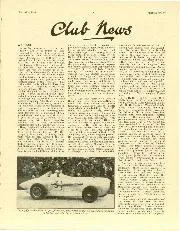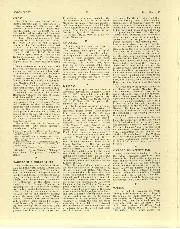

Club News, January 1948
We Hear A reader informs us that a 1921 "40/50" Rolls-Royce tourer has been purchased by a farmer from a garage in Llandudno, in which town a 1922 Rolls-Royce Twenty…
TUNING MOTOR CYCLES FOR SPEED—continued.
little difficulty in detecting ally inequalities in the alignment of the front and rear wheels. The latter being due to some minor inaccuracies in the fork ends or the setting of the hub spindles, but on the other hand may result from distortion of the tubes of the frame. In the latter circumstance, one is well advised to have the whole frame trued by an expert frame builder, or to return it to the makers, so that it may be reset properly with the aid of accurate jigs. The latter course is preferable in most cases where defects are discovered and after the frame has been returned by the makers, there need be no fear of the wheels failing to track,unless one is unlucky enough to have a crash during the road testing operations. Attention to the frame will naturally include an overhaul of the forks, together with any steering damper which may be fitted, and when one is satisfied that all these frame details are in order, the inspection of the steering head may be commenced. •
The Danger of Pitted Head Races.
One of the most usual defects to be found in steering heads is that of pitted ball races, caused by the hammering of the balls when the adjustment has been allowed to slack off. On no account should the head be reassembled if the ball races show the least sign of pitting, for this is certain to render the steering stiff or erratic. It is surprising to find how often the steering ball races give trouble either due to bad machinery or imperfect design, so this point must receive due attention.
Supposing, however, the races are in good condition, they should be greased and re-assembled, carefully adjusting the head to eliminate all traces of shake. It is not desirable to pack the head too full with grease as this only tends to churn up and create friction instead of providing a proper film of lubricant for each of the balls and their races.
Attention to the Brakes and Wheels.
As it is probable that some high speeds will be attained during the tuning process, it is important to adjust the brakes so that the shoes are as close to the drum as is possible without actually rubbing when disengaged, and obviously all the brake actuating mechanism needs the most careful scrutiny and overhauling.
With reference to the wheels, the wheels should be carefully washed out to remove all the old grease which may have become coagulated and the bearings should then be refitted with light gear grease or thick oil. The difference in the running of the wheels after the treatment recommended has to be experienced to be believed. Most amateurs make the mistake of screwing up. the cone adjustments too tightly ; but, as a matter of fact, the adjustment should be little more than finger tight before the locking rings are firmly secured.
The next item is that of removing the tyres in order to test the wheels for truth, and in tightening any loose spokes care needs to be exercised to avoid pulling the rim out of truth. At this stage one should look out for spoke ends which may project inside the rim and came risks of puncturing the tube from the inside at awkward moments.
If security bolts are not already fitted, the rims should now be drilled to receive them. Opinions vary as to the number of security bolts required, but for ordinary purposes two per wheel will suffice. Careful spacing of the holes is very necessary so as to preserve the balance of the wheel and for the purpose of spacing the tyre valve should count as a bolt, so that the rim may be divided by three equally spaced holes. When replacing the tyre balance of the wheel and the tyre calls for strict attention, for at high speeds any lack of balance will seriously interfere with the ease of steering and the road holding qualities of the machine. This point may be emphasised by the following facts : When running at a speed of Ioo m.p.h. a 26 in. wheel rotates at 1,300 r.p.m. and an unbalanced weight of only one ounce placed 12 inches from the hub, generates a centrifugal force of 36 lbs. to upset the balance of the wheel. If any reader cares to check these figures the formula for centrifugal force is :—
W.R.N 2 Where W. = weight in pounds.
R. = radius in feet.
2933 N. = revs, per min.
The above particulars explain why racing cracks are so insistent upon good balance, which beside influencing steering and stability avoids other stresses imposed upon an unbalanced machine.
Any slight discrepancies in wheel balance may be corrected by the simple expedient of winding thick copper wire around the two spokes diametrically Opposite the valve and the added weight should be secured by soldering in preference to the usual insulation tape. One cannot, in fact, be too fastidious about wheel balance on a high speed motor cycle, which is a somewhat neglected factor in racing efficiency as may be gathered by the fact that one sometimes finds wheels that can be rotated by the slightest pressure applied to a spoke nipple, whilst others require a decided push to start rotation. (To be continued.)